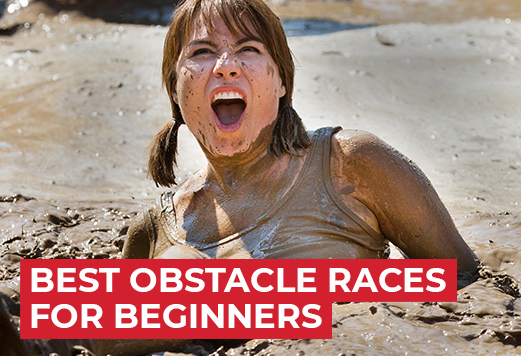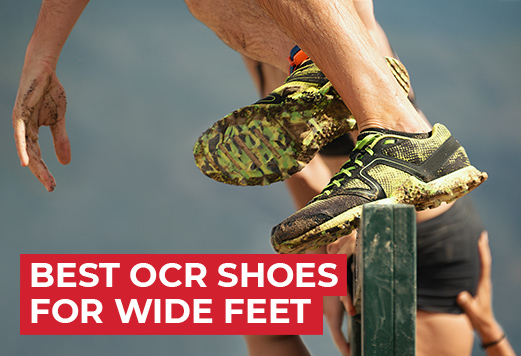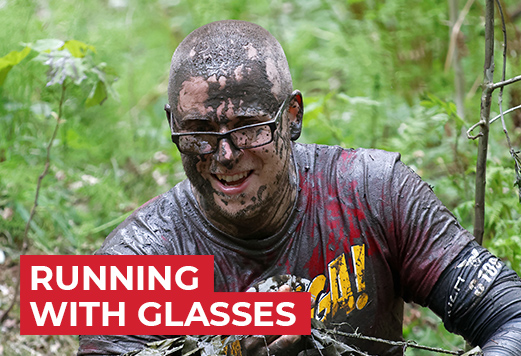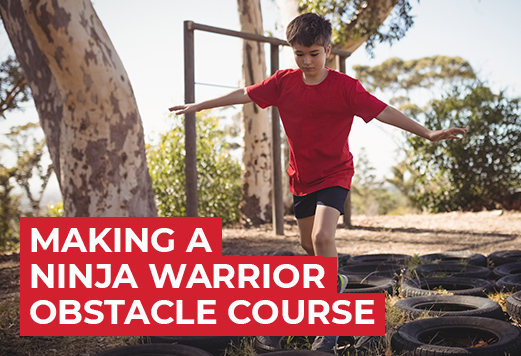29 Quick Solutions That Every Runner With Foot Pain Need to Know
Trail running and obstacle racing is tough on your feet, and it even becomes more painful without proper shoes. Here are the best foot care tips.
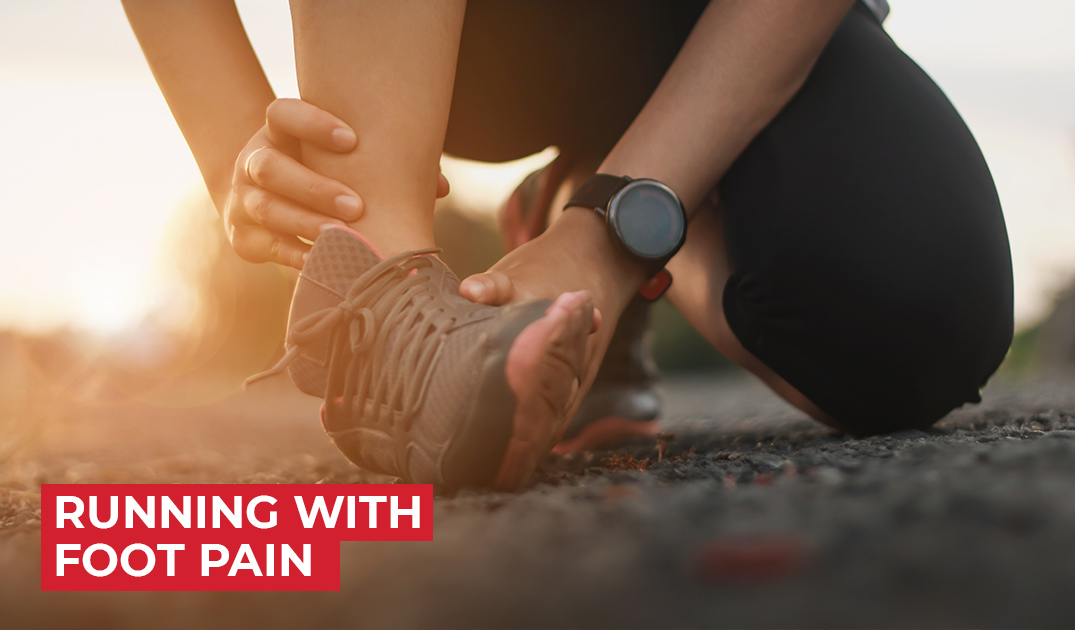

The best habit a runner could develop is to take excellent care of his feet on a daily base. With proper stretching exercises, foot hygiene, and footwear, most of the following foot pain can be resolved.
However, those solutions are aimed at the runners who, after consulting an expert, are looking for extra help. Such as for trail running shoe suggestions. We already asked so much from our feet, they now deserve the best care, and only a doctor or physical therapist can diagnose the root of your foot pain.
If you're searching for the best running shoes for wide feet and expecting to find a real review from a real runner. Check out this list I created of the top wide shoes for OCR.
Arch pain
The arch of our foot is one of the most sensitive regions on our body, and its resistance is put at the test when running. Some of us will inevitably feel the sharp stabbing pain in the middle of foot, mainly associated with Plantar Fasciitis, but also connect to other arch related issues.

Plantar Fasciitis
Probably one of the most common pain among runners, Plantar Fasciitis is described as sharp pain going through the bottom of the foot and even spreading to the heel.
Stretching should be on your workout schedule when you want to treat Plantar Fasciitis, but investing in a good pair of running shoes also have its benefits.
When shopping for new trail running shoes, the first thing to look for is a decent arch support. Depending on the level of pain, you'll want to stay away from the flat shoes and go with the higher arch support.
Furthermore, the ideal shoes for runners with Plantar Fasciitis symptoms would have excellent cushioning to absorb the shock associated with running. Otherwise, the impact shoots more pain through the feet when you strike the trail hard.
Trail running is especially hard the feet, and you'll need all the support you can have. Don't necessarily go for the lightweight running shoes, choose the one with the robust heel counters with a flexible toe box instead. These features protect your feet from getting more beat down by the trail. For Plantar Fasciitis, I would suggest these Salomon Speedcross shoes. In my opinion, they are the best trail running shoes for most runners.
You can always add more support by replacing the removable sock liner with an orthotic. These Tread Labs Stride insoles are designed to help with plantar fasciitis by supporting your arch. For several runners, this combination is the holy grail, and they wouldn't run without it.

Flat feet
While running, did you ever experience pain in the arch area? Is it perhaps swelling along the inside of your foot? It may be a sign of low arched feet.
A low arch foot is a postural deformation also called flat feet. An excellent hint to know if you have flat feet is to make a print of the sole of your foot. Place a sheet a paper on the floor and with your feet wet, smoothly step on it. If the foot appears to be in complete contact with the ground (without or insignificant arch), you probably have flat feet.
Moreover, runners who suffer from flat feet are usually victims of overpronation. This sideways movement can often lead to ankle or knee pains.
If you are experiencing pain and swelling, it's crucial that you rest and apply ice on the painful area. As pain relief medications can have an immediate effect, only physical therapy can cure the problem for good.
Choosing the proper trail running shoes is essential to prevent the overload of stress put on the tendons and joints. The first characteristic to look for is the interior support of the shoes. To avoid overpronation, the right shoe for the flat feet runners have extra foam padding on the inside of the feet. It is providing more stability to reduce the inward rolling of the feet. Additionally, to increase the support of the foot, it's essential to choose the footwear with a thicker sole.
Runners with flat feet tend to put more pressure on the bottom of their shoes. Therefore, a wider shoe design will drastically improve the comfort, as swelling may occur while you are running.
These Altra Superior 4 trail running shoes provide a sufficient amount of support to avoid pronation of the foot, while also been wide enough to prevent squeezing the foot in case of swelling.

High arches
Is the tendon linking from your toes to the heel seem painful? Sometimes, runners with high arched feet, also feel pain in the football, even up to the hips and lower back.
There is a pretty straightforward test you can use to know if your feet have high arches. Start by putting your foot in water and step on a sheet of paper to get a print of the bottom of your foot. People with high arched feet will notice a very thin section connecting the heel and football. In the extreme case, this connection can be non-existent, with a footprint sperate in 2 parts.
With high arched feet, you must be very careful with the type of running shoes to buy. One of the most important features is the thickness of the cushioning. The sole of the sneaker should compensate between the heel and the football while you are running. Also, look for a running shoe with a wide toe box, because the toes from a victim of high arched feet tend to clench. Consequently, a larger space for your toes will prevent them from squeezing together and give your toes more space to lay comfortably flat. Finally, be careful with the height of the heel, because a heel of more than 2 inches will cause more pain in your foot. Therefore, you can't go wrong with the Altra Superior 4 trail running shoes.
The ankle support is also essential to prevent twisting or fractures. This is where a good trail running shoes become useful because this type of running shoes offers more ankle support. However, you might need extra help from this ankle brace, especially if you are experiencing persistent inflammation. Those kinds of ankle support can be worn inside the shoes and provide enhanced comfort to your feet.
Top of foot pain
Sharp pain on top of the foot, near your toes, could be the symptoms of extensor tendonitis. Many people experienced this sort of pain when the shoe placed too much pressure on the upper foot.

Extensor tendonitis
For some runners, the discomfort and pain are located at the top of their foot. The pain especially appears when they put pressure on top of the foot. It feels like the tendons are becoming weaker, and it impairs your ability to run and even move the toes. Additionally, this pain could affect only one of your feet.
Could be the signs of Extensor Tendonitis, a foot pain that usually evolves as the running continues.
The first solution would be resting and icing the top of your foot until the inflammation goes away. Taking anti-inflammatory pills will help with the pain.
Once the inflammation as stops, it's time to start the stretching and strengthening exercises. It is improving the flexibility and strength of the tendon on top of your feet. However, physical therapy should be your focus to cure the pain for good. Also, the physical therapist will provide the right exercises to perform.
When you are ready to run again, make sure you treat your feet to zero drop running shoes similar to these Inov-8 Roclite trail running shoe. The heel drop put extra stress on your tendons by interfering with the rebound of the foot while running (plantar flexion).
You should also consider the way you lace your shoes because many runners have found a shoe lacing trick that works pretty well with Extensor Tendonitis. Skip all the holes between the first and last one, leaving a large gap above the foot. The top of your foot will be more comfortable and less squeeze by the laces.
Side of foot pain
The outside edge of the foot is susceptible to pain. Depending on the shape of your feet, this pain on the inner side of your foot could be the signs of the following injuries.

Peroneal tendonitis
In some case, the pain is on the outside of your foot and up to the lower leg. This injury can be the result of an overworked tendon, that become inflamed or even damaged. If you recognize yourself in the previous description, you might be suffering from peroneal tendonitis. This injury often happens to runners with a high arched foot.
The best treatment for peroneal tendonitis would include resting and icing the side of your foot. Additionally, it's imperative to visit a physiotherapist. Your prescription may consist of daily exercises or even a brace to correct the pronation of your foot.
When your PT (physiotherapist) gives you the green light to start running again, you should make sure you have the proper running shoes.
First, look at the cushions and make sure the shoes have enough shock absorption features. While running, the ankle needs to be extra protected, because it's where your overworked tendons are connecting to your foot. Anything that can improve your comfort is a great feature. Look for cushioning or inserts that can reduce the stress put on your feet.
Also, proper support can be beneficial to prevent more injuries, especially when you are running in rugged trails or obstacle courses.
Finally, choosing a lightweight shoe, like these Salomon Speedcross (link to Amazon), make all the difference in the healing process: the more weight your foot has to move, the more stress you're putting on the injured tendons.

Bunions
Your feet are going through so much, and it's common among runner to see swelling spots and red bumps after a tough run. However, if the redness is mainly located on the side of your toes, and it looks like a bonny bump on the big toe joint, you might be a victim of bunions.
No, a bunion is not a bagel flavor, it's torture for the runners who suffer from this painful sensation along the side of the foot. Over time, the chafing makes the bunions worst and can cause the big toe to slant toward the next toe.
Therefore, it's critical to get the proper trail running shoes like the Altra Superior 4.
Foremost, you need to focus on comfort, and this means ditching the narrow shoes that squeeze the foot while running. Check for the wide toe box shoes, that allow the foot to move without friction. At every stride of the feet, your toes must be enabled to expand comfortably inside the shoes. This also means to look for sufficient cushioning and flexibility.
Also, a breathable shoe eliminates chaffing possibilities. The air must quickly come inside while draining the water out. Consequently, look for light mesh and water wicking fabrics.
Finally, well-fitted shoes will provide all the support your feet need to run without friction.
Heel pain
Pain in the heel is no stranger to a vast majority of runners. The pain is mainly due to repetitive heel strikes on the ground. This type of foot pain can appear during or after a run.

Achilles tendonitis
After running, do you experience pain along the back of the heel; moreover, the tendons feel stiff and painful for several days? You might be suffering from Achilles tendonitis.
The good news is no surgery is part of the solution. However, it could take 2-3 months to get rid of the pain. During that resting period, you should apply ice on your Achilles tendon multiple times per day. Painkillers are also helpful with the inflammation. Besides, you must avoid putting useless weight on your feet.
When your Achilles tendon hurts, it's time to do more cross-training than running.
Runners with high arched or flat feet, as well as an overpronation of the feet, are more susceptible to an Achilles tendinitis.
However, if you continue running, it's essential to wear proper shoes to avoid more suffering. Your actual running shoes might be forcing your heel to twist and causing irritation along the heel.
The Salomon Speedcross 4 are the best trail running shoes for Achilles Tendonitis because they have a decent arch and ankle support. The goal is to keep the foot steady, even when the trail or the obstacles are rough. Also, be careful to pick a shoe that has heel cushioning or insoles and a slight heel drop, sufficient enough to offer more comfort.
A good pair of orthotics, like the Tread Labs Stride (link to Amazon), can also help support the foot while reducing pressure on your tendon.

Heel Spurs
Pain in the heel can sometimes feel like a stabbing knife, keeping us from running or even walking. In particular case, the inflammation can look similar to a bump on the front of the heel.
This bony looking bump can be the result of calcium deposits directly under your heel bone. Also called Heel Spurs, this situation occurs when the tendons become inflamed, and unlike herniated discs in the spine, spurs are permanent sediments on the bone.
The immediate solution is to rest and apply cold compress on the painful heel. Anti-inflammatory drugs and painkillers can also help in the healing process. While some people get corticosteroid injections, I would prioritize physical therapy. Regularly perform the proper stretching exercises is the key.
It's imperative to get the right running shoes if you want to continue training for your upcoming obstacle race. You'll need a trail running shoes with enough arch support and extra heel cushions, like the Salomon Speedcross. The sneaker must be perfectly fit your feet and contain enough shock absorption cushions; you'll be able to continue running pain-free.

Bruised Heel
When every step becomes painful, and you can feel the pain all the way down to the bottom of the heel, you might be suffering from a bruised heel. It can be the result from your heel repetitively striking the trail or jumping from an obstacle into a hard surface. A bruised heel could become a heel spur overtime.
Heavy runners, barefoot runners, and runners with poorly cushioned shoes are more susceptible to develop a bruised heel.
Recovering from this condition may take up to 6 weeks and involve taking a break of running.
Apply ice and keep your weight off the injured heel for as long as possible. Taping up the heel with this kinesiology tape also limit additional damage.
When you start training and running again, make sure your shoes still have enough shock-absorption cushioning. If not, you could try a gel insert or buying new shoes. Nevertheless, your sneaker should be low-heeled to avoid further stress on the heel. Take a look at the Inov-8 Roclite 290 trail running shoe (link to Amazon), and I pretty you're feet will be pleased. Plus, I would also consider hiring a running coach to correct my running technique. Chances are you are a heel striker, and this could be the source of your pain.
Toes pain
Love them or hate them; without your toes, it would be challenging to run. Although, most runners, like my self, have given up on having presentable toes. Mine look horribly beat down, and all my friends think I'm a masochist who enjoys smashing his toes with a hammer. Seriously, here's why my runner's toes look painful.

Blisters
Who never had one of those famous skin bubble filled with fluid? Blisters can occur at any time, and it's not exclusive to runners. They are not serious health issues but running with a painful blister is a living nightmare.
In case you must absolutely run with a blister on your toes (ex: race coming up), make sure to take the necessary steps to avoid more pain.
First, drain the fluid by piercing a tiny hole with a needle or a knife. Clean the blister with soap or alcohol and apply these blister-specific Band-Aids (link to Amazon). I would also add an extra layer of Moleskin Comfort Padding to make sure it stays safe. If you don't have access to the Moleskin, try wearing a second pair of socks. It's not perfect, but it's better than the pain.
When you have experienced the joy of running without blisters, you want to continue in the same direction. Therefore, some precaution can be taken to ensure a blister-free run.
First, you should check out these Injinji toe socks (link to Amazon), because they do miracles. If you can't get your feet on those blister-free socks, you should wear moisture-wicking socks. The goal is to avoid friction that comes with moisture. Also, taping your toes with first aid tape can work, or use duct tape as a last resort.
Your shoes also play an essential role to prevent blisters. Good trail running shoes like the Salamon Speedcross, must drain water properly, and dry quickly to prevent moisture from building up inside the shoe. Most trail running shoes have those abilities, however, stay away from Gore-Tex because it's know to block the water from going out of the shoe.

Hammertoes
Our toes absorb loads of stress while running, and for some runners, the pain evolves into contracted toes. With every foot strikes, the toes are pushed against the front of the toe box, and this is why we called this condition the Hammertoes.
Those symptoms appear when the toes are squeezed tight or when the shoe is simply too small for our feet. In the beginning, the toes are still flexible and could be corrected without surgery. However, with time, the deformity can become permanent.
Trail running shoes with narrow toe box are the enemies of the hammertoes. The best shoes must be comfortable by providing enough space for the toes, precisely like these Superior 4 from Altra (link to Amazon). Additionally, the sole must be firm and shock absorbing, but the top of the shoes must be flexible. This allows the toes to move freely without being crushed at every stride you take. Moreover, wearing the proper running shoes for contracted toes can also prevent shin splints, calluses, and bunions.

Calluses
Probably not the most painful issues that can occur to your feet. Still, thick skin building up under your toes cause discomfort. Calluses are a natural result of repetitive friction under the feet.
When you start felling the thickened skin, use this pumice stone (link to Amazon) to sand the calluses and apply moisturizing lotion to keep it soft. The objective is to control calluses and never let it become too big. Thick calluses tend to crack and become infected.
The painful calluses are produced from friction. Then wearing thicker running socks with extra paddings, such as these MudGear socks, can prevent excessive friction.
Furthermore, make sure your running shoes fit correctly with enough space for your toes. The Altra Superior 4 is a good pair of trail running shoes, and they have the wide toe box you need.

Black toenails
Losing a toenail is painful, and it takes time to heal. Unfortunately, many runners have to deal with black toenails regularly. Right now, I have 3 injured toenails from my last season of trail running and Spartan Race.
They are the result of heavy running, causing trauma and blood to build under the injured toenail. The blood appears to be black.
In some case, the black portion will disappear with time, or the whole toenail will fall off. Lucky me, my nails were not too beat off, and they stayed in place.
Trail running and obstacle racing are not the most gentle type or running activities. Consequently, it essential to wear shoes with robust sole and extra protection in front of the toe box. In this case, my Salamon Speedcross have these excellent features, and they are probably the reasons I still have my nails.
Foot pain & trail running shoes chart

Takeaway
The previous advice can really make the difference, and you could be running pain-free really soon if you take care of your feet.
In my opinion, good trail running shoes like the Salamon Speedcross can be beneficial to most runners dealing with foot pain. They have the arch and ankle support, plus all the cushioning you need to stay comfortable, even in the most rugged trails.
Take care of your feet, and you'll be running for a long time.
P.S. If you're searching for the best OCR shoes for wide feet and hoping to get genuine advice from a real runner. You should check out this list I created of the top running shoes for wide feet.
I have picked this model of trail running shoes because I'd used them in different obstacle races and mud runs. Plus, I'd confirmed my selection with my fellow OCR runners. With all their insights and my own experience, I've built this list of the top wide shoes for obstacle racing.

Thank you for reading!
Hi, I'm the Obstacle Ninja, and I will share with you my tips on how to crush it at your next obstacle racing. Also, how to get your little ninja more active with obstacle course. Want to know more about me? Read my story!

Hi, I'm the Obstacle Ninja, and my passion is OCR (obstacle course running).
My idea of the perfect weekend is to run a Spartan Race or Tough Mudder with my family. We love to run in the mud and challenge your self with the obstacle. My kids and I, we love to watch Ninja warrior and train for our next obstacle race or mud run.
I will share with you my tips on how to crush it at your next obstacle racing. Also, how to get your little ninja more active with obstacle course.
Want to know more about me?
Read my story!
Got questions? Contact me!
